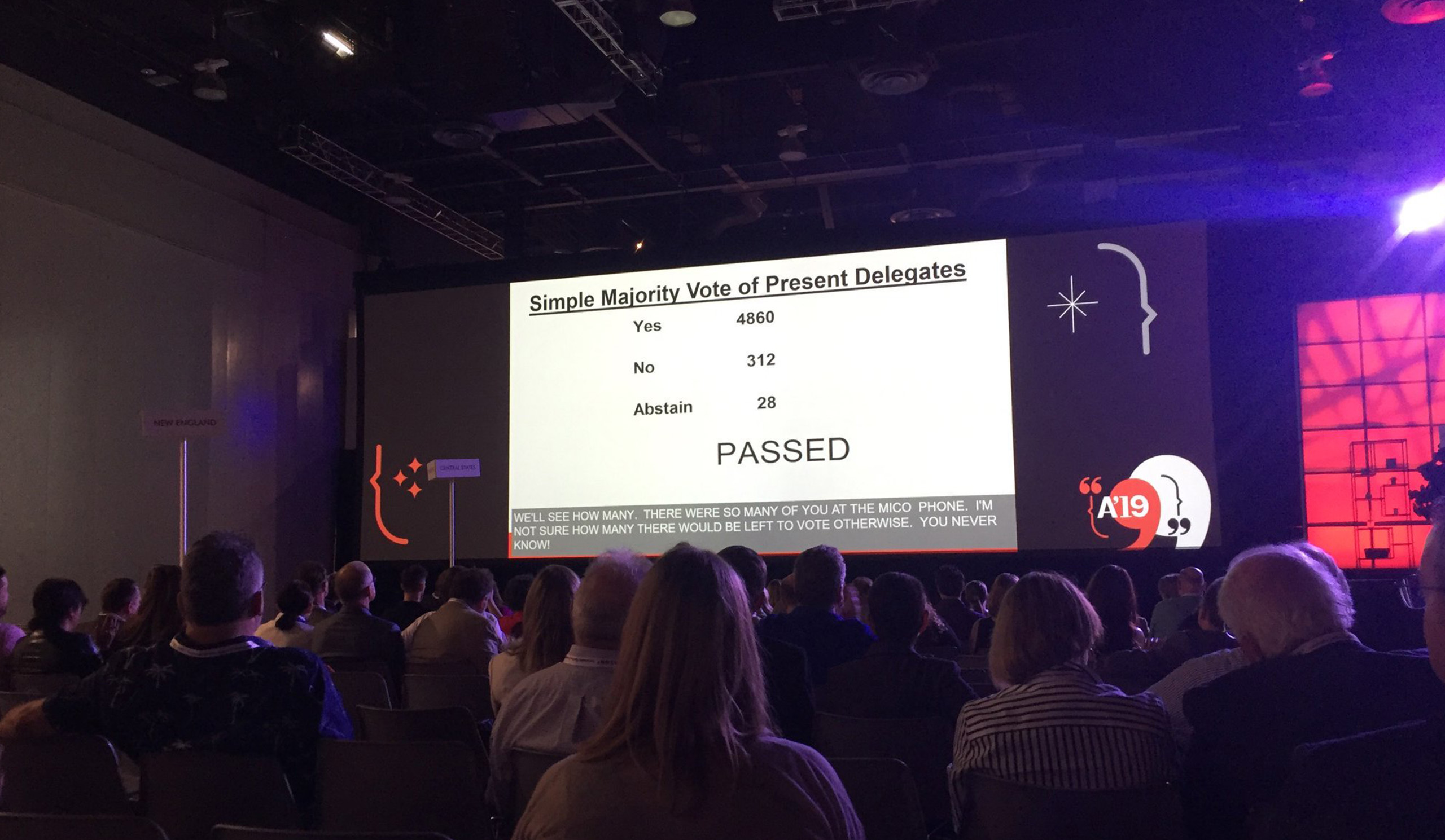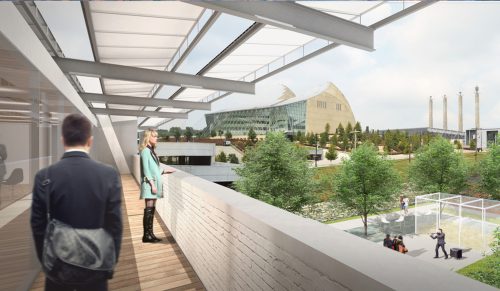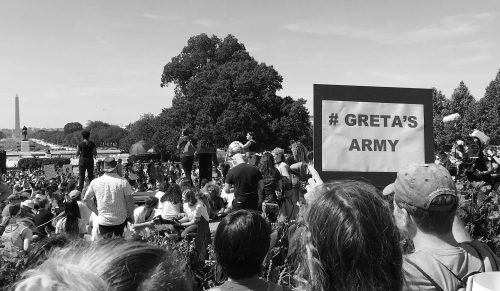
The Big Move – Elevating the Profession through Energy, Economy, and Equity
Knowledge is Our Currency
Dan Hart, AIA, National Board Member and Chair of this year’s Board Knowledge Committee, likes to remind us all that “knowledge is our currency.” Since earlier this year, there has been talk of “The Big Move” within the Board and Strategic Council of AIA. While it’s possible that the messaging and/or branding of this movement may change over the coming months, it is worth understanding the term, what’s behind it, and where it’s going. As Dan likes to suggest, the current language of The Big Move is instructional. “The” indicates that it is singular and intentional (not “a” or “some kind of”); “Big” suggests it is meaningful and consequential; “Move” means it is going somewhere and has momentum. So even if the name changes, all of these characteristics will remain intact.
The Big Move
The Big Move was first described in a letter from AIA President Bill Bates to the Board of Directors and Strategic Council. His message is summarized here:
- AIA is undertaking a major, long-term commitment to regenerative design, sustainability, and resilience through 2030.
- Our priorities are focused on three areas over the next two to three years: Design for Economy, Design for Energy, and Design for Equitable Communities:
- Design for Economy is about building the business case for regenerative design. There is growing evidence that “next ¬generation green” buildings are more costly than traditional or even “light-green” buildings, especially when factoring in opportunities for incentives and return on investment outcomes. It is critical that existing and future building owners are educated on this point, and it is our responsibility to give voice to this knowledge. As President Bates notes, “increasing client demand for regenerative design is paramount for success.”
- Design for Energy considers the role that buildings play as a major contributor of global greenhouse gas emissions, which drive climate change. As suggested by Architecture 2030, a primary focus of our design decisions should improve building performance until we achieve carbon neutrality while providing functional needs, comfort, and enjoyment. Energy benchmarking is a critical focus area.
- Design for Equitable Communities is tied to the health of our communities. It is about creating walkable, human-scaled communities that are diverse, accessible, and welcoming. Intentional and thoughtful community engagement is the first step down this path, which has housing affordability and vibrant public realms at its core.
These three focus points are not a mandate but an invitation for all AIA members to meet clients and communities where they are and to provide relevant information about the future of their organizations, the planet, and the community so that they are well-¬equipped to make resilient decisions. It is an invitation to engage where there is the greatest need within each context.
Early Movement
There are already some early wins in this direction:
- At A’19, Resolution 19-11 was resoundingly passed. The AIA Resolution for Urgent and Sustained Climate Action provides a framework for action to:
- Declare an urgent climate imperative for carbon reduction;
- Transform the day-to-day practice of architects to achieve a zero-carbon, equitable, resilient and healthy built environment; and
- Leverage support of our peers, clients, policy makers, and the public at large.
- On the Strategic Council, the Forecast Knowledge Work Group recently redirected their efforts to develop a Climate Action Plan that incorporates clearer language and direction to support the Resolution, with hopes of adoption in the coming year via public review and comment.
- Within the AIA Knowledge Communities, the Committee on the Environment (COTE) has already been making great strides in this direction with the creation of the COTE Top Ten awards and their Super Spreadsheet for project data-tracking, and is in the early stages of launching the Common App. This online resource is intended to be a simple way of gathering and reporting basic project data focused on environmental, human, and economic metrics. One of the most powerful aspects of the Common App is to gather consistent data points for each project. This is beneficial for multiple reasons. One simple outcome is that the Common App will standardize metrics for submission to award programs, instead of each program creating their own requirements. With consistent data requirements, the team can know in advance which metrics to track and then use this to submit to multiple award programs. Even without the award program applications, the dataset collected would benefit project teams and owners alike as they compare to target metrics and their competition. This tool is being piloted in 2019 in a few Knowledge Communities and within a few local AIA components. All are encouraged to participate.
- Other Knowledge Communities will no doubt follow as their work is influenced by or continues to contribute to resilient design strategies. It is exciting to consider how each Knowledge Community will bring their knowledge to the conversation.
And, of course, the Board of Directors will continue to discuss, prioritize, and set goals that focus on 2020 and beyond. The Strategic Council’s Strategic Planning effort is already reflecting this direction in the 2021-2025 plan for the Institute. Both quick ¬wins and long-term strategies will be targeted.
This began by embracing the AIA Design Excellence Framework that includes ten areas of ethical and responsible design (Energy, Equitable Communities, Water, Resources, Change, Integration, Economy, Wellness, Discovery and Ecology), which will guide us over the next decade.
President Bates further noted that the Board has been “enthusiastic about coalescing around a powerful purpose that will change people, change communities, and change the world through architecture”. The hope is to stay focused in a way that will bring more value to all AIA members and, by extension, our clients.
Elevating the Voice of the Profession
So, while AIA is now focused on resiliency and climate action in the foreseeable future, The Big Move is more broadly about elevating the voice of the profession. Everyone that I’ve spoken with about The Big Move is excited about this new direction for AIA and the many opportunities for having real and positive impact.
AIA STRATEGIC COUNCIL MESSAGE BY LAURA LESNIEWSKI. FROM AIA YAF CONNECTION 17.03 – PRACTICE INNOVATION IN ARCHITECTURE. LAURA SERVES AS THE SENIOR REGIONAL REPRESENTATIVE TO THE STRATEGIC COUNCIL FROM THE CENTRAL STATES REGION AND IS THE COUNCIL’S LIAISON TO THE YOUNG ARCHITECTS FORUM ADVISORY (YAF) COMMITTEE. SHE ALSO SERVES ON THE BOARD KNOWLEDGE COMMITTEE AT AIA NATIONAL THIS YEAR.

